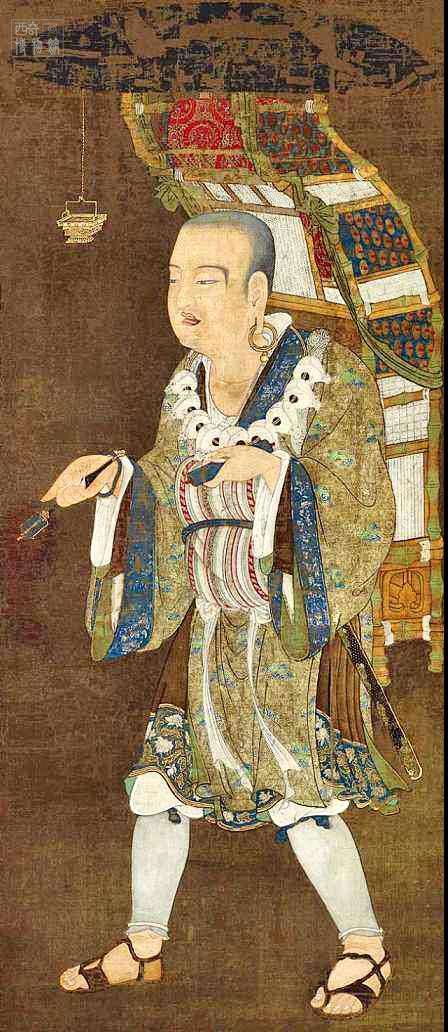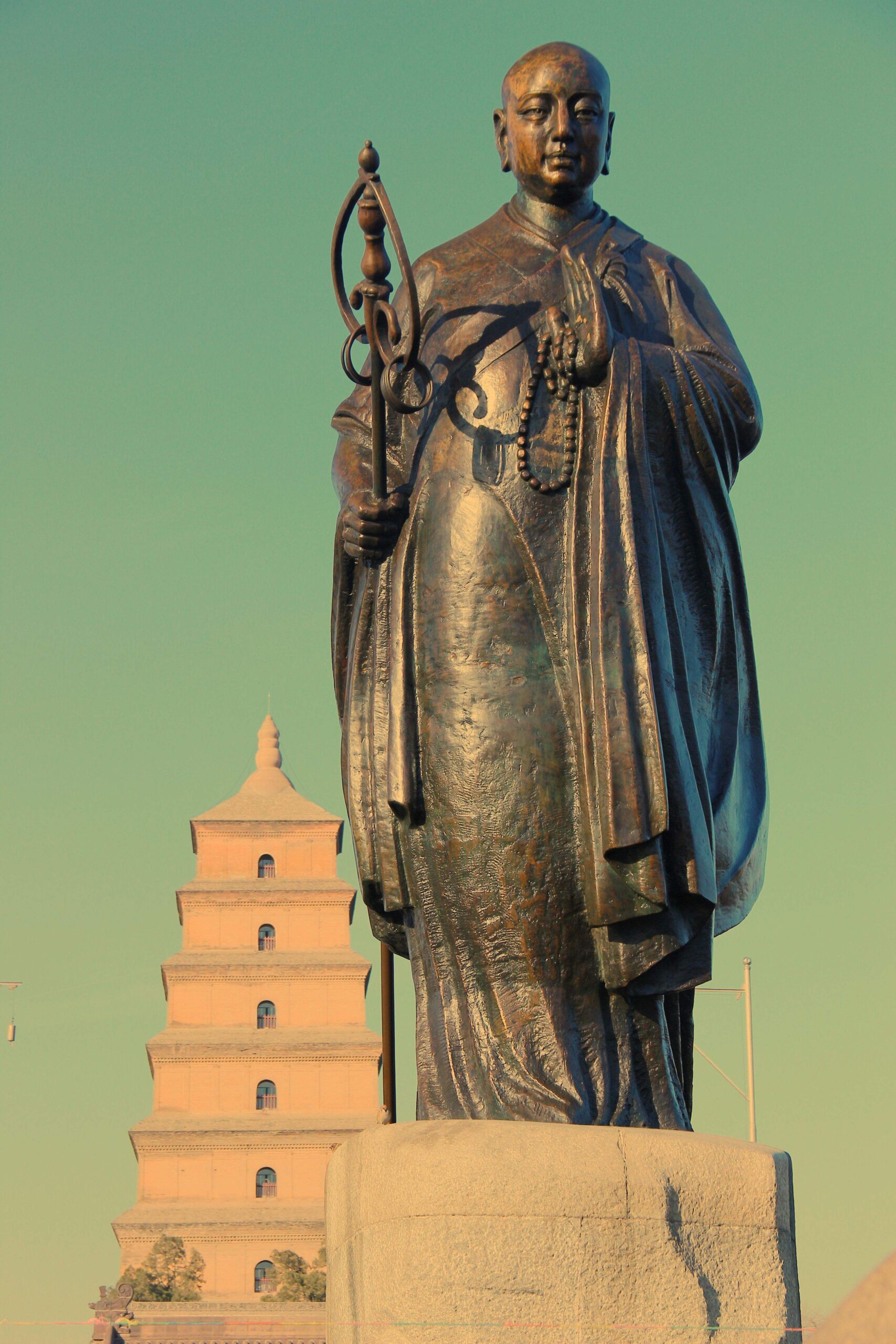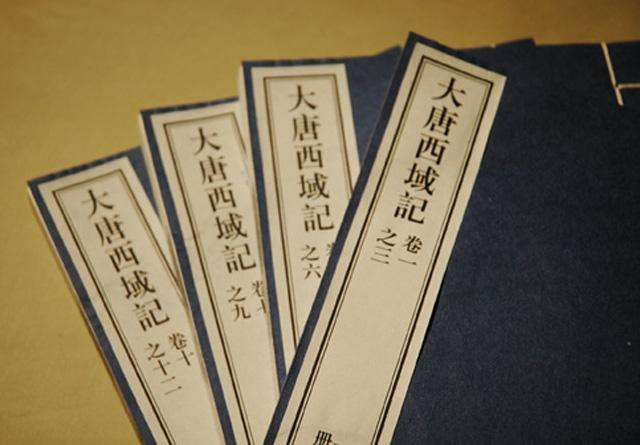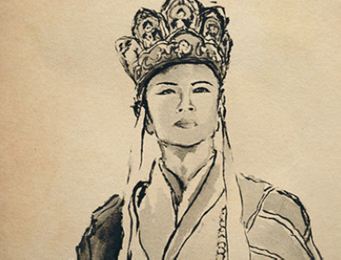A great translator of Buddhist scriptures
Overview
Chinese Name: 玄奘
English Name: Xuanzang
Other Names: Chen Hui 陈华;Chen Yi 陈祎
Born: 602 AD
Died: 664 AD
Achievements:
Founder of Chinese Han Buddhism中国汉传佛教唯识宗创始人
created Great Tang Records on the Western Regions 创作了《大唐西域记》
One of the four translators of Buddhist scriptures 我国汉传佛教四大佛经翻译家之一
Brief Biography of Xuangzang
Xuanzang was born on 6 April 602 in Chenliu, what is now Kaifeng municipality in Henan province. As a boy, he took to reading religious books, and studying the ideas therein with his father. Like his elder brother, he became a student of Buddhist studies at Jingtu monastery. Xuanzang was ordained as a śrāmaṇera (novice monk) at the age of thirteen.
Due to the political and social unrest caused by the fall of the Sui dynasty, he went to Chengdu in Sichuan, where he was ordained as a bhikṣu (full monk) at the age of twenty. He later traveled throughout China in search of sacred books of Buddhism. At length, he came to Chang’an, then under the peaceful rule of Emperor Taizong of Tang, where Xuanzang developed the desire to visit India.
He knew about Faxian’s visit to India and, like him, was concerned about the incomplete and misinterpreted nature of the Buddhist texts that had reached China. He was also concerned about the competing Buddhist theories in variant Chinese translations. He sought original untranslated Sanskrit texts from India to help resolve some of these issues.

At age 27, he began his seventeen-year overland journey to India. He defied his kingdom’s ban on travel abroad, making his way through central Asian cities such as Khotan to India. He visited, among other places, the famed Nalanda monastery in modern day Bihar, India where he studied with the monk, Śīlabhadra.
He departed from India with numerous Sanskrit texts on a caravan of twenty packhorses. His return was welcomed by Emperor Taizong in China, who encouraged him to write a travelogue. This Chinese travelogue Dà Táng Xīyù Jì (Great Tang Records on the Western Regions) is a notable source about Xuanzang, and also for scholarship on 7th-century India and Central Asia.
His travelogue is a mix of the implausible, the hearsay and a firsthand account. Selections from it are used, and disputed, as a terminus ante quem of 645AD for events, names and texts he mentions. His text in turn provided the inspiration for the novel Journey to the West written by Wu Cheng’en during the Ming dynasty, around nine centuries after Xuanzang’s death.
Xuanzang’s outstanding contribution
Xuanzang’s work, the Great Tang Records on the Western Regions, is the longest and most detailed account of the countries of Central and South Asia that has been bestowed upon posterity by a Chinese Buddhist pilgrim. While his main purpose was to obtain Buddhist books and to receive instruction on Buddhism while in India, he ended up doing much more. He has preserved the records of the political and social aspects of the lands he visited.

His record of the places visited by him in Bengal — mainly Raktamrittika near Karnasuvarna, Pundranagara and its environs, Samatata, Tamralipti and Harikela— have been very helpful in the recording of the archaeological history of Bengal. His account has also shed welcome light on the history of 7th century Bengal, especially the Gauda kingdom under Shashanka, although at times he can be quite partisan.
Xuanzang obtained and translated 657 Sanskrit Buddhist works. He received the best education on Buddhism he could find throughout India. Much of this activity is detailed in the companion volume to Xiyu Ji, the Biography of Xuanzang written by Huili, entitled the Life of Xuanzang.
His version of the Heart Sutra is the basis for all Chinese commentaries on the sutra, and recitations throughout China, Korea, and Japan. His style was, by Chinese standards, cumbersome and overly literal, and marked by scholarly innovations in terminology; usually, where another version by the earlier translator Kumārajīva exists, Kumārajīva’s is more popular.

Xuanzang in the faction
Xuanzang’s journey along the Silk Road, and the legends that grew up around it, inspired the Ming novel Journey to the West, one of the great classics of Chinese literature. The fictional counterpart Tang Sanzang is the reincarnation of the Golden Cicada, a disciple of Gautama Buddha, and is protected on his journey by three powerful disciples.

One of them, the monkey, was a popular favorite and profoundly influenced Chinese culture and contemporary Japanese manga and anime (including the popular Dragon Ball and Saiyuki series), and became well known in the West by Arthur Waley’s translation and later the cult TV series Monkey.
In the Yuan Dynasty, there was also a play by Wu Changling (吴昌龄) about Xuanzang obtaining scriptures.
The movie Da Tang Xuan Zang was released in 2016 as an official Chinese and Indian production. It was offered as candidate for Best Foreign Language Film at the 89th Academy Awards due to its amazing camera work, but ultimately was not nominated.